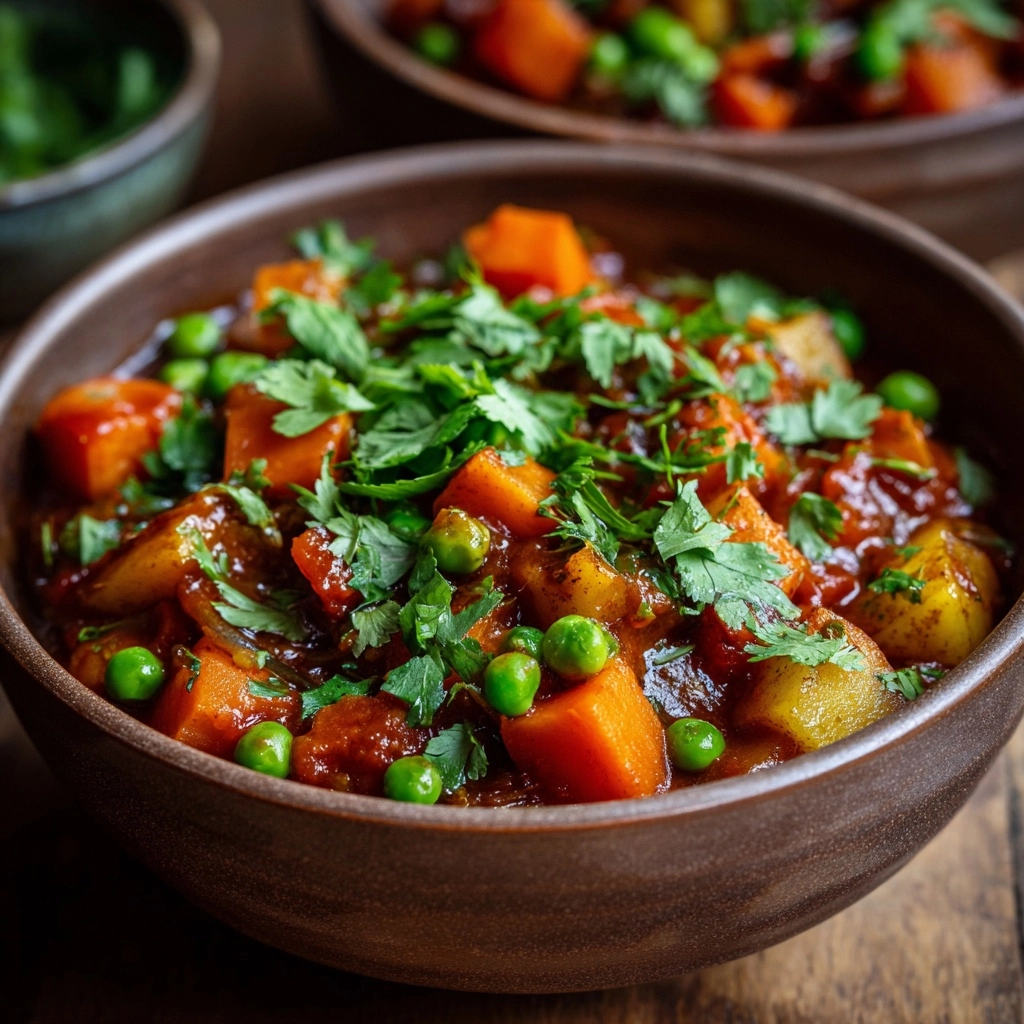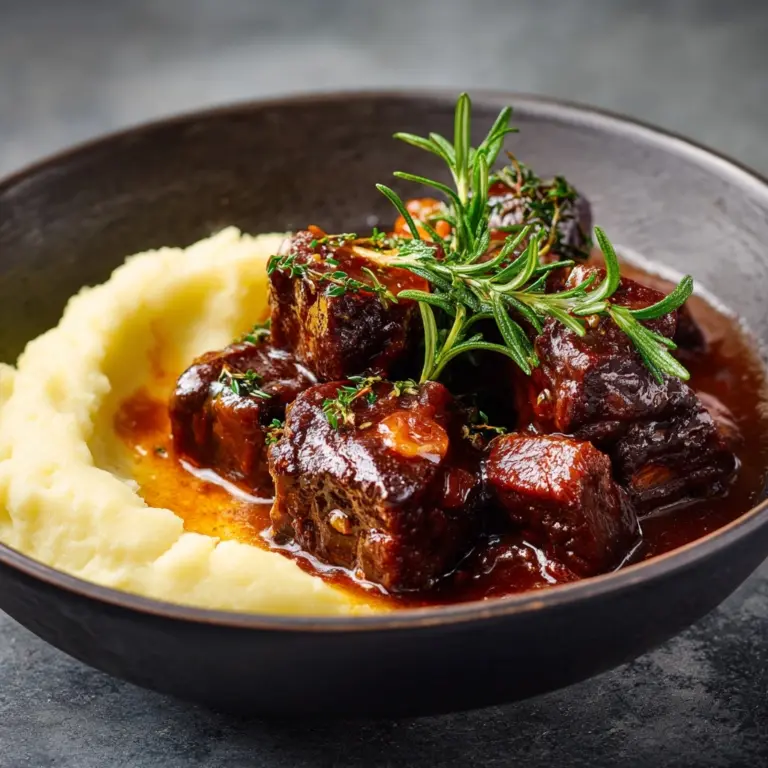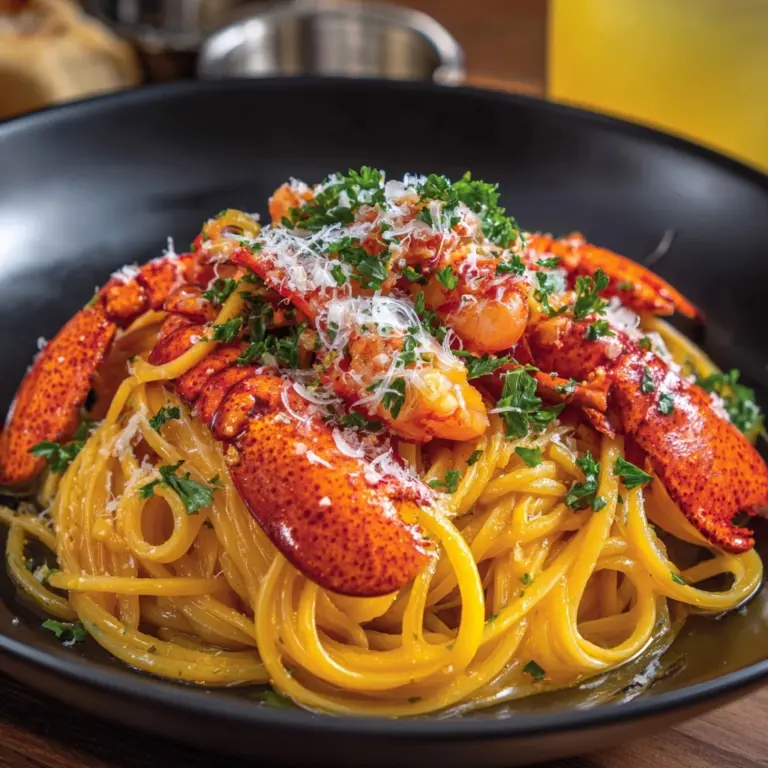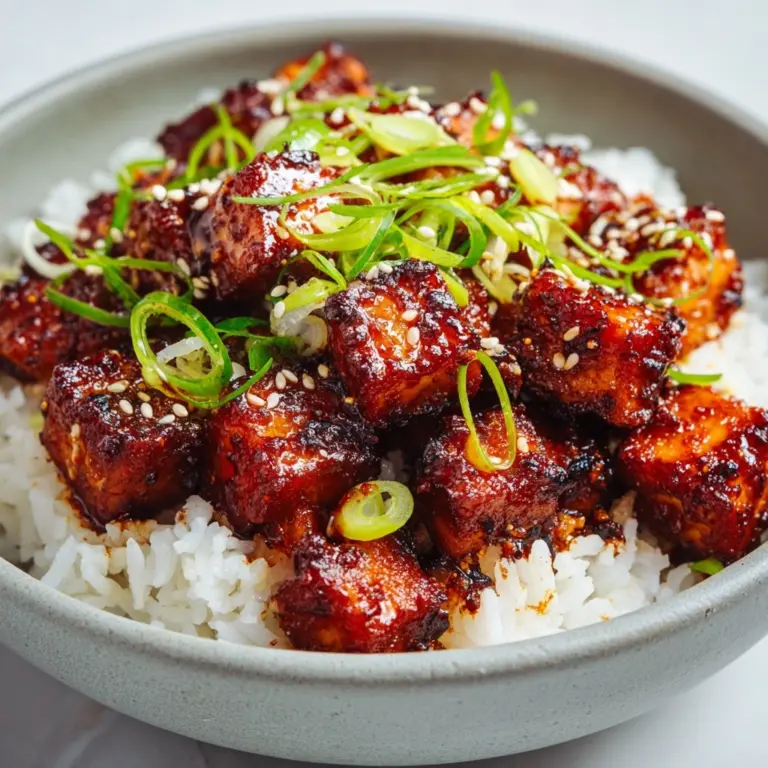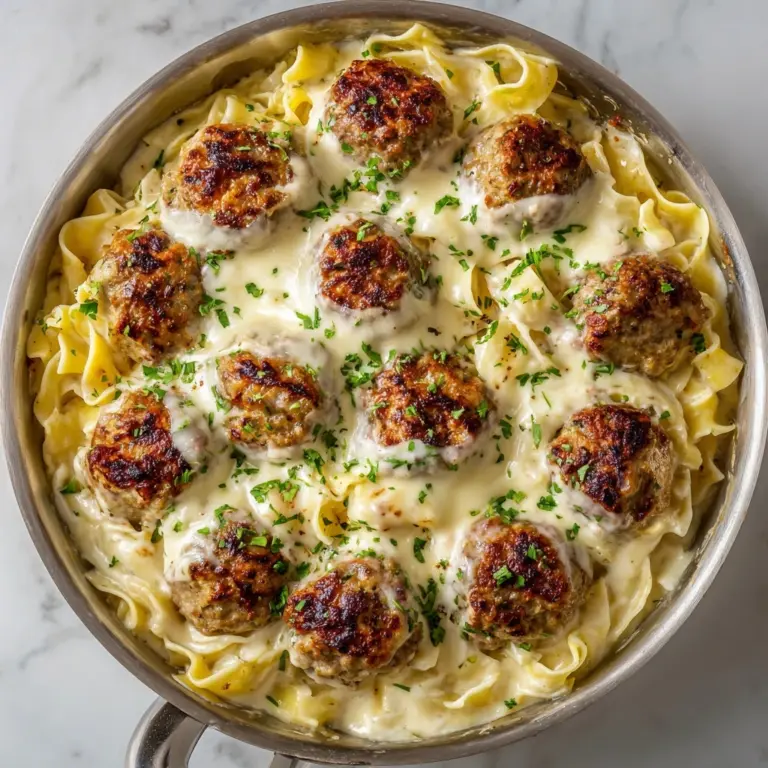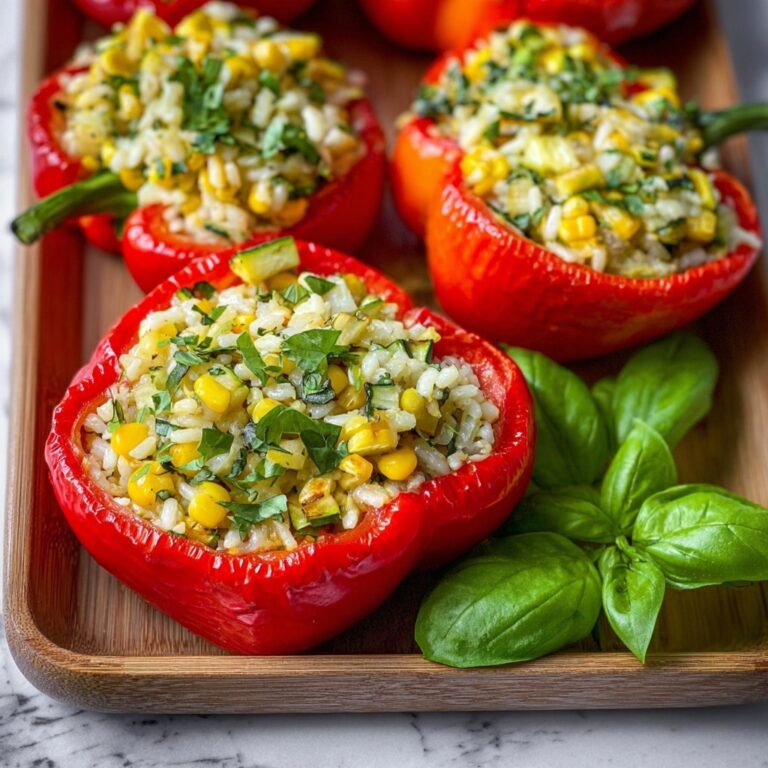This fragrant, vibrant Vegetable Curry is nothing short of a cozy hug in a bowl: loaded with seasonal veggies, warming spices, and creamy coconut milk, it’s pure comfort food with a breezy, nourishing twist. Whether you’re a lifelong curry fan or just dipping into the world of homemade plant-based dinners, this one-pot wonder is a celebration of color, flavor, and flexibility. It comes together in under an hour and fills your kitchen with irresistible aromas. If you’re craving something that’s hearty, wholesome, and endlessly adaptable, this Vegetable Curry will quickly become your new go-to!
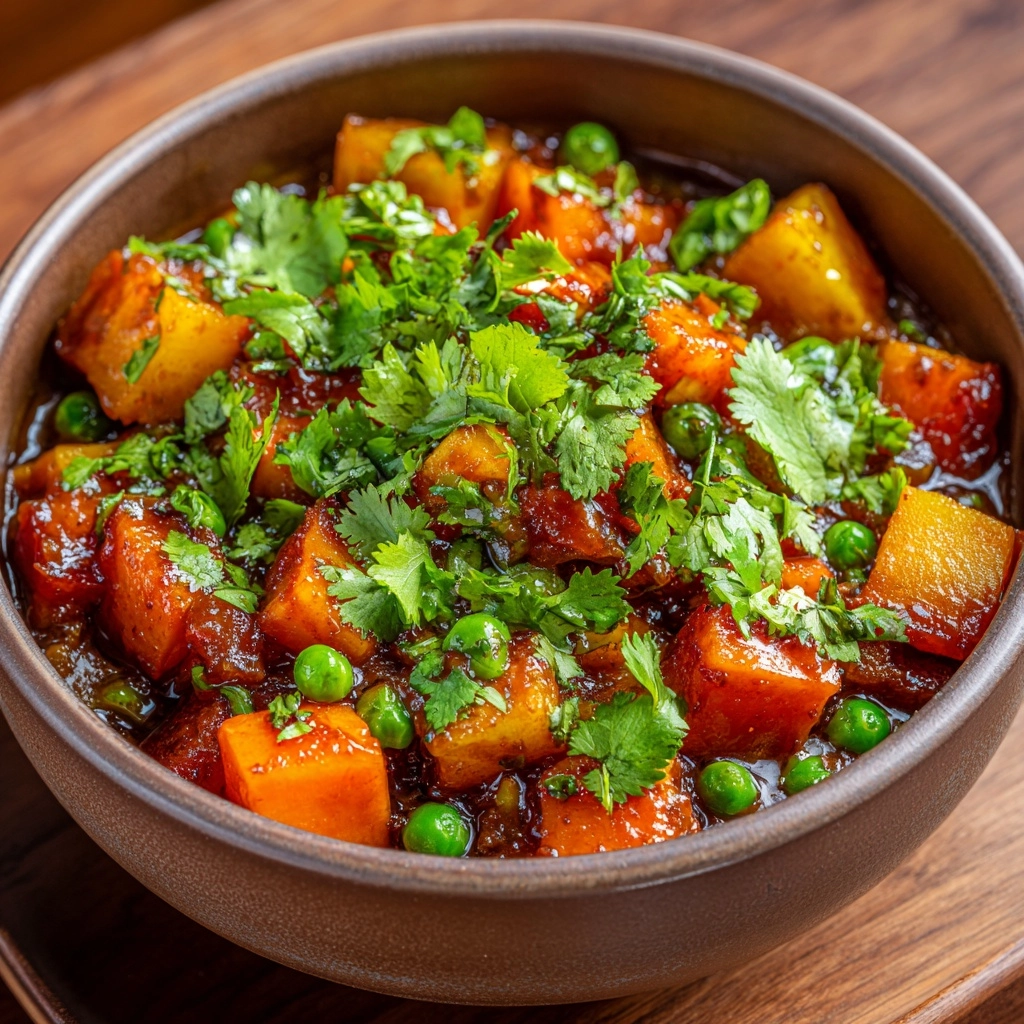
Ingredients You’ll Need
The beauty of this Vegetable Curry is both its simplicity and its flair—each ingredient enhances the texture, taste, or color, making every spoonful special. Let’s run through the essentials and why they matter to your pot of culinary sunshine.
- Vegetable oil: Helps the aromatics and spices release their flavors right from the start.
- Onion (diced): The foundational sweetness and mellow bite that give the curry depth.
- Garlic (minced): Adds a zippy, savory base that balances the richness of the coconut milk.
- Fresh ginger (grated): Brightens up everything with its zingy, slightly peppery notes.
- Curry powder: Packs in classic South Asian flavor—ground aromatic spices that make this curry shine.
- Ground cumin: Earthy and warm, it rounds out the overall taste with a gentle smokiness.
- Turmeric: Gives the vegetable curry its stunning golden hue and a soft, earthy undertone.
- Cayenne pepper (optional): For a whisper (or a punch) of heat, if you want a little kick.
- Diced tomatoes (canned): Add acidity and body to balance all the creamy and spicy notes.
- Coconut milk (canned): Brings luxurious creaminess and a subtle sweetness—absolutely essential for that silky finish.
- Cauliflower florets: Their texture soaks up flavor and provides bite without overpowering.
- Diced carrots: For pops of color, subtle sweetness, and a pleasant crunch.
- Green beans (trimmed and cut): Offer color and just the right amount of snap in each bite.
- Cubed potatoes: Hearty, comforting, and oh-so satisfying—they make the curry filling and grounding.
- Frozen peas: Stirred in at the end for bursts of sweet, green freshness and pretty color.
- Salt and black pepper to taste: Essential for seasoning—adjust as you go for just the right balance.
- Chopped fresh cilantro for garnish: The finishing touch that adds aroma, flavor, and a pop of green.
How to Make Vegetable Curry
Step 1: Sauté Aromatics
Start by heating vegetable oil in a large pot or deep skillet over medium heat. Add in your diced onion and let it cook for 4 to 5 minutes—don’t rush this part, as a soft, golden onion base sets the stage for all the rich flavors ahead. Once the onion is ready, stir in the garlic and ginger, letting those sizzling scents fill the kitchen for about one minute. That’s when you know your curry is already off to a running start!
Step 2: Toast the Spices
Now, sprinkle in the curry powder, ground cumin, turmeric, and cayenne pepper (if you’re craving some heat). Stir these seasonings into the aromatics for about 30 seconds. This helps unlock the spices’ essential oils, making the whole pot deeply fragrant and deliciously complex without needing any fancy techniques.
Step 3: Build the Sauce
Pour in the diced tomatoes and creamy coconut milk, giving everything a good stir. This is where the magic happens—the coconut milk mellows any tanginess from the tomatoes and envelops the vegetables in a lush, velvety sauce that’s never heavy or cloying. You’ll start to see that signature golden color emerge.
Step 4: Add the Vegetables
Slide in your cauliflower, carrots, green beans, and potatoes. Stir those beauties into the bubbling sauce, making sure they’re nicely coated. Now is the time to season with salt and pepper—start light, taste as you go, and adjust to your liking. Bring the pot to a gentle boil so the flavors can start melding together.
Step 5: Simmer Until Tender
Reduce the heat and cover the pot, letting it simmer away for 20 to 25 minutes. As the curry cooks, all the vegetables absorb the aromatic sauce—cauliflower becomes tender, potatoes silky, and carrots sweeten. Stir occasionally and check for doneness; you want everything fork-tender but not mushy.
Step 6: Finish and Garnish
Just before serving, stir in the frozen peas. They only need 2 or 3 minutes to go from icy to vibrant—any longer and they’ll lose their color and snap. Once that’s done, taste and tweak your seasoning as needed. Ladle the Vegetable Curry into bowls and sprinkle generously with fresh chopped cilantro to brighten everything up.
How to Serve Vegetable Curry
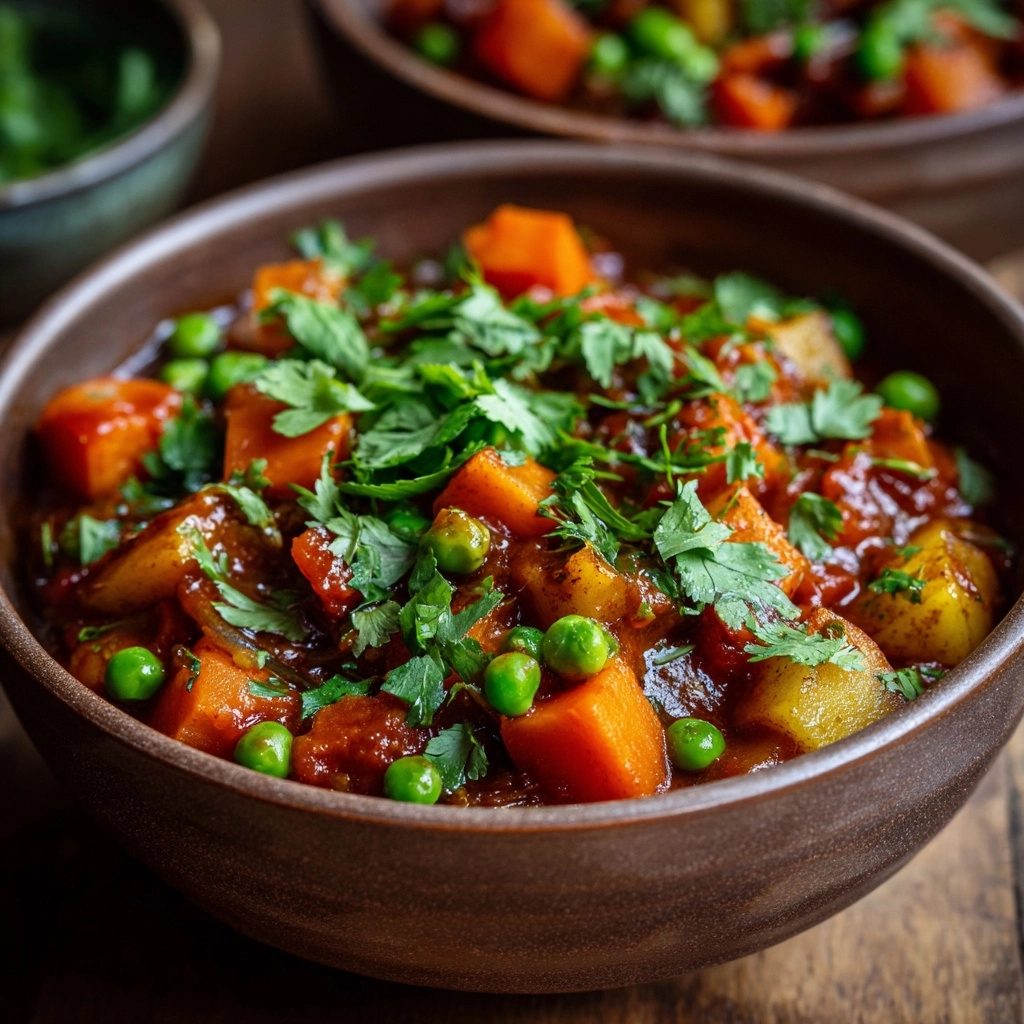
Garnishes
Fresh cilantro is classic—its grassy, citrusy aroma finishes the curry perfectly. For an extra flourish, try adding a dollop of coconut yogurt, a scattering of toasted cashews, or even a squeeze of lime for extra zing. These vibrant toppings make every serving of Vegetable Curry feel restaurant-worthy.
Side Dishes
The most beloved accompaniment is a mound of fluffy, steamed basmati rice to soak up the gorgeous sauce. But naan bread or roti are perfect for scooping up every last bit. If you want something lighter, try serving this Vegetable Curry with a crisp cucumber salad or tangy mango chutney for a sweet-heat contrast.
Creative Ways to Present
Transform your curry night by spooning the Vegetable Curry over baked potatoes or spooning it into warm pita pockets for a fun family-style meal. Hosting friends? Serve your curry in hollowed-out roasted squash halves, or line up little cups for a colorful, crowd-pleasing tasting platter at your next gathering.
Make Ahead and Storage
Storing Leftovers
This Vegetable Curry is a meal prep superstar—it only gets more flavorful as it sits! Allow the curry to cool completely, then transfer to an airtight container. Store in the refrigerator for up to four days; just keep it sealed tight so it doesn’t pick up any stray fridge flavors.
Freezing
Need dinner in a pinch? Freeze leftover Vegetable Curry in freezer-safe containers or zip-top bags for up to three months. Let the curry cool and portion it out before freezing to preserve texture and flavor. When you’re ready, thaw overnight in the fridge, then gently reheat.
Reheating
Reheating is a breeze: simply warm leftovers in a saucepan over low to medium heat, stirring occasionally and adding a splash of water or coconut milk if the sauce seems too thick. For single servings, the microwave works great; cover loosely and heat in bursts, stirring in between for even warmth.
FAQs
Can I use different vegetables in my Vegetable Curry?
Absolutely! This curry is fantastic with whatever’s in season or in your fridge. Bell peppers, zucchini, spinach, or sweet potatoes all work beautifully—just adjust simmering times for any delicate veggies you add.
Is this Vegetable Curry spicy?
With just a pinch of cayenne, the heat level is quite gentle, mellowed by coconut milk. Want it spicier? Add extra cayenne, chop in some fresh chili, or top with chili flakes!
Can I make this dish ahead of time?
Yes, in fact, Vegetable Curry tastes even better after a day or two. Make it ahead, store in the fridge, then gently reheat for quick weeknight dinners or meal prepping.
What kind of coconut milk should I use?
Full-fat canned coconut milk gives you the creamiest, richest base. If you prefer a lighter curry, lite coconut milk is fine, but avoid coconut “beverage” cartons since they’re too thin for the sauce.
How do I thicken my curry if it’s too soupy?
If you prefer a thicker Vegetable Curry, just simmer it uncovered for a few extra minutes to let it reduce. You can also mash a few pieces of potato and stir them in—they’ll naturally help thicken the sauce.
Final Thoughts
If you’re searching for a meal that’s effortlessly satisfying and bursting with flavor, this Vegetable Curry is the answer! It’s simple enough for busy weeknights, yet vibrant enough to share with friends. Give it a try, put your own spin on the veggies, and watch it breeze straight into your regular rotation. Happy cooking!
Print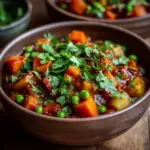
Vegetable Curry Recipe
- Prep Time: 15 minutes
- Cook Time: 30 minutes
- Total Time: 45 minutes
- Yield: 4–6 servings
- Category: Main Course
- Method: Stovetop
- Cuisine: Indian-Inspired
- Diet: Vegan, Gluten-Free
Description
This flavorful and comforting vegetable curry is a hearty dish packed with a medley of colorful vegetables simmered in a fragrant coconut curry sauce. Perfect for a satisfying meatless meal that’s easy to make and full of vibrant flavors.
Ingredients
Main Ingredients:
- 2 tablespoons vegetable oil
- 1 medium onion (diced)
- 3 cloves garlic (minced)
- 1 tablespoon fresh ginger (grated)
- 1 tablespoon curry powder
- 1 teaspoon ground cumin
- 1/2 teaspoon turmeric
- 1/4 teaspoon cayenne pepper (optional)
- 1 can (14 oz) diced tomatoes
- 1 can (14 oz) coconut milk
Vegetables:
- 2 cups cauliflower florets
- 1 cup diced carrots
- 1 cup green beans (trimmed and cut)
- 1 cup cubed potatoes
- 1 cup frozen peas
Seasoning:
- Salt and black pepper to taste
- Chopped fresh cilantro for garnish
Instructions
- Heat the oil: In a large pot or deep skillet, heat vegetable oil over medium heat.
- Sauté aromatics: Add diced onion and cook until softened. Stir in minced garlic and grated ginger, cook for 1 minute.
- Add spices: Stir in curry powder, cumin, turmeric, and cayenne (if using) until fragrant.
- Combine tomatoes and coconut milk: Pour in diced tomatoes and coconut milk, stir to combine.
- Add vegetables: Add cauliflower, carrots, green beans, and potatoes. Season with salt and pepper.
- Simmer: Bring to a boil, then reduce heat, cover, and simmer for 20–25 minutes until vegetables are tender.
- Finish: Stir in frozen peas, cook for additional 2–3 minutes. Adjust seasoning if needed.
- Serve: Garnish with chopped cilantro before serving.
Notes
- Serve over steamed rice or with warm naan bread.
- You can swap in seasonal vegetables like zucchini, bell peppers, or sweet potatoes based on availability.
Nutrition
- Serving Size: 1 1/2 cups
- Calories: 280
- Sugar: 7g
- Sodium: 420mg
- Fat: 17g
- Saturated Fat: 9g
- Unsaturated Fat: 7g
- Trans Fat: 0g
- Carbohydrates: 27g
- Fiber: 6g
- Protein: 6g
- Cholesterol: 0mg

